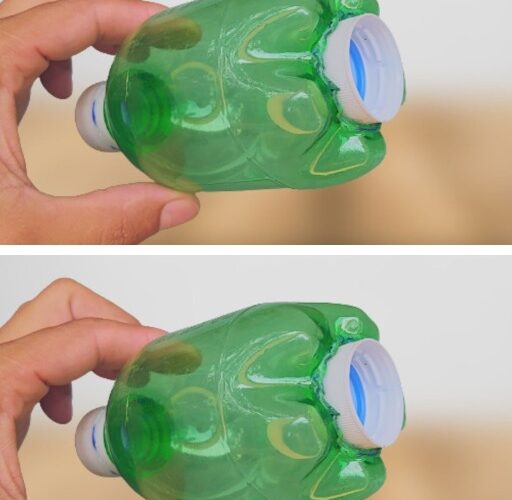ADVERTISEMENT
y be transformed into a bird feeder. This is a simple and effective way to reuse plastic bottles while helping local bird populations.
- Step 1: Poke a few holes on the sides of the bottle.
- Step 2: Thread a string or wire through the holes, then fill the bottle with birdseed.
- Step 3: Hang the bottle from a tree or hook, and watch the birds flock to their new feeder.
d. Craft Projects
Plastic bottles and caps are perfect for a variety of craft projects. You can use them to create everything from decorative vases to mini storage units for your craft supplies. For example:
- Plastic Caps as Game Pieces: Old bottle caps can be used as markers for board games or even for arts and crafts projects with kids. Let your imagination run wild by painting them or using them in sculptures.
- Bottle Neck Lanterns: Use the necks of bottles to create decorative lanterns. Cut them into different shapes, paint them with bright colors, and add a light inside to make a colorful addition to your home.
The possibilities are endless when it comes to crafting with plastic bottles and caps!
e. Eco-Friendly Cleaning Tools
Did you know you can make your own eco-friendly cleaning tools from plastic bottles? By cutting the bottles and adding a few materials, you can create simple yet effective scrubbers and brushes for cleaning. Here’s an example:
- Plastic Bottle Scrubbers: Cut the bottom of a plastic bottle into strips to make a DIY scrub brush. This can be particularly useful for cleaning tough spots or scrubbing pots and pans.
3. Recycling Plastic Bottles and Caps
While repurposing is a great option, recycling should also be part of the solution. Many communities offer curbside pickup for plastic bottles and caps, but it’s important to note that not all plastic caps are recyclable in the same way as bottles. Some recycling centers may accept caps, while others may not, due to their size and material differences.
Here’s what you can do to ensure proper recycling:
- Remove the Caps: Before recycling plastic bottles, make sure to remove the caps. This helps prevent contamination in the recycling stream. However, if your local recycling program accepts caps, keep them on.
- Check the Recycling Symbols: Look for the recycling symbol on the bottom of the bottles to ensure you are recycling the correct plastic type. Most plastic bottles fall under the #1 (PET) or #2 (HDPE) categories, which are commonly accepted for recycling.
- Rinse Before Recycling: It’s important to rinse out any remaining liquids from bottles before placing them in the recycling bin. This helps keep the recycling process clean and effective.
4. Innovative Uses for Plastic Caps
Plastic bottle caps often get overlooked, but they are incredibly useful too! Here are a few ways to reuse them:
- DIY Coasters: Collect a variety of plastic caps, and glue them together in a circle to create colorful, eco-friendly coasters.
- Keychains: Attach a small loop or ring to a plastic cap, and you’ve got a quick and easy DIY keychain.
- Furniture Protectors: Attach plastic caps to the legs of furniture to prevent them from scratching or damaging floors. This can be especially helpful for chairs, tables, or heavy furniture.
- For Complete Cooking STEPS Please Head On Over To Next Page Or Open button (>) and don’t forget to SHARE with your Facebook friends
5. The Bigger Picture: Reducing Plastic Waste
While repurposing and recycling plastic bottles and caps are great ways to reduce waste, it’s important to also consider the bigger picture of plastic consumption. By opting for reusable alternatives—such as glass, stainless steel, or bamboo products—you can significantly reduce your overall plastic use.
- Invest in Reusable Bottles: By using a reusable water bottle, you’ll reduce the need for single-use plastic bottles. This is one of the most impactful changes you can make.
- Avoid Excess Packaging: Choose products with minimal packaging or packaging made from recyclable materials, reducing your overall plastic waste.
6. Conclusion: The Power of Repurposing Plastic Bottles and Caps
Knowing how to repurpose plastic bottles and caps opens up a world of possibilities, helping you reduce waste and contribute to a more sustainable lifestyle. Whether you use them for gardening, crafting, cleaning, or storage, these everyday items can be transformed into something useful, creative, and environmentally friendly.
By incorporating these eco-friendly practices into your daily life, you’ll not only reduce your carbon footprint but also inspire others to think twice before tossing their plastic bottles and caps in the trash. So the next time you reach for that empty bottle, remember this secret: don’t throw it away—rethink, repurpose, and recycle!
